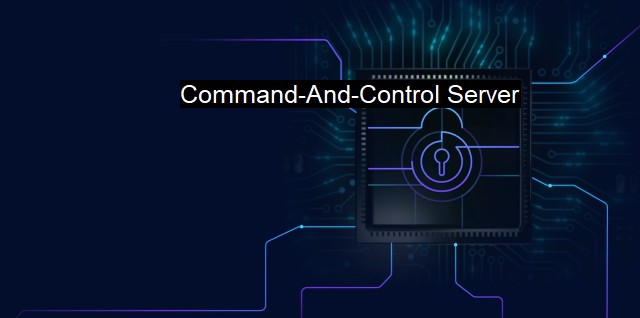What is Command-And-Control Server?
The Power of Command-and-Control Servers: Enabling Cyber Attacks and the Growing Threat of Cybercrime
A "Command-and-Control Server" or C2 server generally refers to a type of malicious computer server that is employed by cyber-attackers to maintain communications with malware-infected systems within a target network. These servers function as a central hub for orchestrating large-scale malware attacks on data networks and infrastructure.Using command and control servers, attackers can carry out a wide array of clandestine activities such as installing further malware onto infected systems, denying service, exfiltrating sensitive data, or committing fraud. This discussion examines the concept of a Command-and-Control Server (C2) in the context of cybersecurity and antivirus.
C2 servers are essentially the brains behind a malicious operation, distributing orders and commands to infected systems to carry out certain actions at the behest of the attacker. This could include anything from data theft to interruption of services, depending on the attacker’s goal.
An attack typically begins when a hacker introduces a malicious software- commonly referred to as malware- into a host system. Once the malware is installed on the victim’s computer, it establishes an outbound connection to the Command-and-Control server. The malware communicates with the C2 server, which sends commands to the compromised machine, effectively turning the machine into a "bot". These bots can be controlled remotely and often work together in what is called a botnet.
This capability to maintain contact with the host system is what makes C2 servers so potent for cyber-attackers. They facilitate real-time monitoring of hosts while dynamically adjusting their attacks per the information gleaned from the hosts themselves.
The establishment of an effective defense against these malicious servers is one of the core challenges security researchers face. Identifying signs of C2 communications often involves monitoring unusually high amounts of data transmission, scrutinizing network event logs, or maintaining robust intrusion detection systems.
Conventional protocols like HTTP might be used for these malicious transactions, making it laborious to distinguish between routine data traffic and these ignite communications. attackers may also use less commonly monitored protocols like Internet Relay Chat (IRC), Peer-to-Peer (P2P), or even custom protocols all aimed at evading detection.
Antivirus software stands as an integral line of defense against C2 attacks. By offering protection against known strains of malware, antivirus software can prevent these malicious software from being installed on the host systems in the first place.
As effective as antivirus solutions are, they cannot guarantee complete protection. Hackers continually evolve their strategies and use sophisticated techniques to mask their actions. Therefore, it's clear that a proactive approach must be taken when dealing with such threats. Along with the antivirus, updated firewalls, intrusion detection/prevention systems, and, importantly, a well-informed user could significantly increase an organization's chances of countering such threats successfully.
To sum it up, Command-and-Control servers represent a critical security challenge in the relaxed, global cybersecurity landscape. Despite the complicated nature of these threats, a combination of robust antivirus, firewalls, intrusion detection systems, and informed cybersecurity practice could prove fundamental in curbing their impact on our digital existence. Proper system hygiene, user vigilance, continued cybersecurity education, and system auditory measures are vital in dealing with Command-and-Control servers and minimizing their potential effects.

Command-And-Control Server FAQs
What is a command-and-control server (C&C server)?
A command-and-control server is a server that is used by attackers to control compromised devices or systems in a botnet. It is used to send commands to infected devices and gather information from them. C&C servers are often used in cyberattacks to bypass security measures and steal sensitive information.How do C&C servers work in cyberattacks?
C&C servers are used to control a network of infected devices or systems in a botnet. Once the attacker gains control of a device, it is added to the botnet and can be used to attack other systems. The C&C server sends commands to the infected devices, which can include launching attacks, stealing data, or downloading and installing additional malware.How can antivirus programs detect and block C&C servers?
Antivirus programs use various methods to detect and block C&C servers. One method is to monitor network traffic for suspicious activity that is characteristic of C&C traffic. Antivirus programs can also use signature-based detection to identify known C&C servers by their unique characteristics or behavior. Additionally, antivirus programs can use behavior-based detection to detect and block new or unknown C&C servers based on their behavior patterns.How can organizations protect themselves from C&C server attacks?
Organizations can protect themselves from C&C server attacks by implementing strong security measures such as firewalls, intrusion detection and prevention systems, and antivirus software. It is important to keep these security measures up to date and to regularly patch any vulnerabilities in systems and software. Additionally, organizations should educate their employees about cyber threats and best practices for cybersecurity, such as avoiding suspicious emails and websites.| | A | | | B | | | C | | | D | | | E | | | F | | | G | | | H | | | I | | | J | | | K | | | L | | | M | |
| | N | | | O | | | P | | | Q | | | R | | | S | | | T | | | U | | | V | | | W | | | X | | | Y | | | Z | |
| | 1 | | | 2 | | | 3 | | | 4 | | | 7 | | | 8 | | |||||||